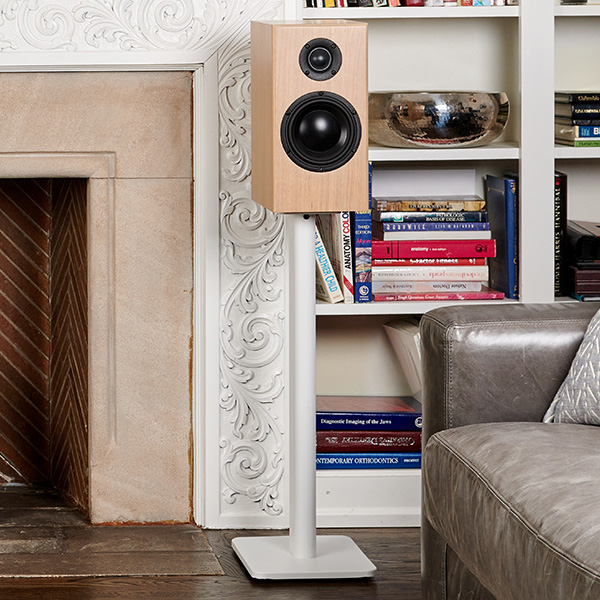
Whether you’ve just invested in a premium audio system or you’ve been deep in the audiophile world for years, proper setup is crucial to getting the absolute best sound out of your gear. At Totem Acoustic, we’ve spent decades helping music lovers unlock the full potential of their systems—and along the way, we’ve seen some common mistakes time and time again. Avoiding these pitfalls can mean the difference between “pretty good” and goosebumps-inducing sonic bliss.
Here are the top 10 mistakes audiophiles make during setup—and how you can avoid them to hear your system at its absolute best.
Your room is the most overlooked component in your audio chain—and often the most important. Even world-class speakers will struggle in a room that’s too reflective, too dead, or just awkwardly shaped.
Common Mistake: Skipping acoustic treatment or placing speakers in rooms with hard, reflective surfaces and no balance.
How To Fix It: Add rugs, heavy curtains, bookshelves, or acoustic panels. Aim for a mix of absorption and diffusion, especially at first reflection points. If your speakers sound overly bright or muddy, your room may be the real culprit.
2. Poor Speaker Placement
Totem Acoustic speakers are very forgiving when it comes to placement compared to other competing brands. That being said, all speakers benefit from a few basic placement tips in order to extract the most immersive soundstaging and spatial accuracy.
Common Mistake: Speakers placed too close to the wall, corners, or asymmetrically across the room.
Fix It: To start with, follow the placement instructions in your speaker manual. Alternatively, you can also follow the “equilateral triangle” rule—your listening position and the two speakers should form a triangle with equal sides. Start with speakers about 2 feet from the back wall and experiment with toe-in angles to fine-tune imaging. Small adjustments can create huge sonic differences. Totem Acoustic speakers don’t require any toe-in but many speakers in the market can benefit from some toe-in.
A subwoofer should blend seamlessly with your main speakers—not boom over them.
Common Mistake: Placing the sub in a corner, setting the volume too high, or skipping phase/crossover alignment.
Fix It: Place the sub near the front of the room (but not always in the corner). Adjust the crossover frequency to match your main speakers, and use phase controls to align wave timing. If your sub sounds detached, it’s a sign it needs calibration.
While cable choice might spark debates, cable placement is a proven factor in maintaining signal clarity.
Common Mistake: Power cables running parallel to RCA or speaker cables, causing electromagnetic interference (EMI).
Fix It: Keep signal and power cables crossing at 90 degrees where possible. Use shielded cables in high-interference areas. Keep Wi-Fi routers, power bricks, and fluorescent lighting away from audio paths.
Too much absorption can kill natural ambiance; too little and you get echoes and muddiness.
Common Mistake: Thinking “more treatment = better sound” or skipping treatment altogether.
Fix It: Treat first reflection points and balance live-end/dead-end zones. Try listening with and without different treatments to understand their impact. Your ears are the best test instrument you have.
It’s easy to get caught up in THD figures, frequency responses, and wattage ratings—but none of that matters if your system doesn’t sound good to you.
Common Mistake: Choosing components solely based on measurements.
Fix It: Audition gear in-person when possible. Trust your ears. Let music—not graphs—guide your choices.
7. Skipping Break-In Time
Yes, break-in is real—especially for speakers and certain types of capacitors.
Common Mistake: Returning or judging equipment prematurely.
Fix It: Give your speakers at least 100–200 hours of regular use before evaluating. Totem speakers often bloom with time as materials settle into optimal performance.
When one component in your chain is too hot or too quiet, it throws everything off.
Common Mistake: Cranking the volume on your preamp or DAC to the max while the amp struggles to keep up—or vice versa.
Fix It: Aim for balanced gain throughout your chain. Each component should operate in its optimal range to preserve dynamics and minimize noise.
Even the most stable-looking rack can transmit vibrations that color your sound.
Common Mistake: Placing gear directly on resonant surfaces or next to bass-heavy subs.
Fix It: Use isolation platforms, spike feet, or dedicated speaker stands to reduce mechanical resonance. Turntables and tube gear benefit most, but solid-state setups can improve, too.
Loud isn’t always better—and too quiet can also mean missing out.
Common Mistake: Listening at volumes too high (causing ear fatigue) or too low (losing dynamics).
Fix It: For critical listening, aim for a moderate volume in the 75–85 dB range. This sweet spot helps you hear dynamic contrasts and tonal balance most accurately.
You don’t need to spend thousands on new gear to dramatically improve your sound. Most of the best upgrades come from refining your setup, tuning your environment, and spending time with your system. At Totem Acoustic, we design speakers that reveal nuance, depth, and emotion—but they need the right environment to fully shine.
Explore more expert guides and listening advice on the Totem Acoustic News + Reviews section and start unlocking your system’s full potential.
Share this article with your friends!
